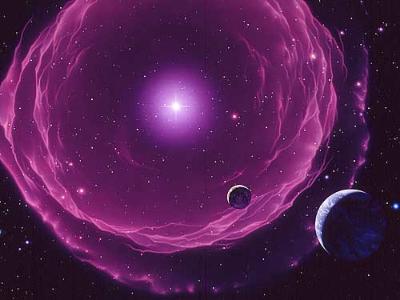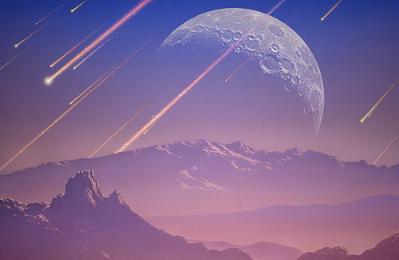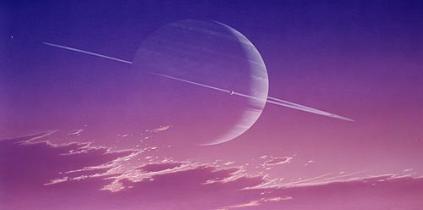Joe
Tucciarone

Joe Tuccciarone has been painting space scenes since he
was eight years old and made his professional debut at the Memphis
Museum planetarium in 1978. Using acrylic paints, he creates wondrous
scenes of exploding stars, planets, galaxies, nebulae, comets and other
heavenly bodies as well as constellations and dinosaurs. Each of his
paintings comes with a detailed description, so his work not only
pleases the eye but also educates the mind.
Joe has been recognized by his college alma mater,
Youngstown State University in Ohio, with a honorary doctorate for
lifetime achievement in science illustration.
And TV's famed Star Gazer, Jack Horkheimer, says,
"Tucciarone's paintings are undoubtedly the most beautiful and sensual
portrayals of space I have ever seen."

5
Billion AD
Five
billion years from now
our sun will swell and become a red giant star, engulfing the innermost
planets. When it exhausts the last of its nuclear fuel it may cast off
a planetary nebula, a glowing shell of expanding gases, as it quickly
dwindles and becomes a white dwarf star. In this view, the shimmering
ring of gas expands toward the lifeless earth and moon.

Firefall
A hail of meteorites rains upon the
lifeless surface of the newly formed earth. Although catastrophic
bombardments like this ceased ages ago, thrilling showers of meteors
still occur.Each year in late November, the earth passes through a
stream of debris shed by Comet Tempel-Tuttle, resulting in the Leonid
meteor shower, named for the constellation Leo from which they seem to
radiate. Once every thirty-three years, the earth encounters a dense
cloud of particles near the comet itself, sometimes producing an
intense firestorm of "falling stars." Spectacular displays of the
Leonids occurred in 1833, 1966 and 2002.

Nightfall
Over Titan
Reminiscent of Chesley Bonestell's
Saturn As Seen From Titan, Joe has this to say about the scene:The
giant moon Titan reigns as king of Saturn's horde of icy satellites.
Larger than the planets Pluto and Mercury, Titan is second only to
Jupiter's moon Ganymede as the largest of the 100+ known moons in our
solar system. A reddish, smoggy atmosphere completely enshrouds this
big moon and prevents any glimpse of the sky beyond. In this view high
above the clouds and haze we see the giant planet Saturn and several of
its inner moons.
To see more of Joe's amazing work, take the spaceship to his website

Catch a ride on the
flying saucer back
to the Outer Space Art Gallery homepage
|
